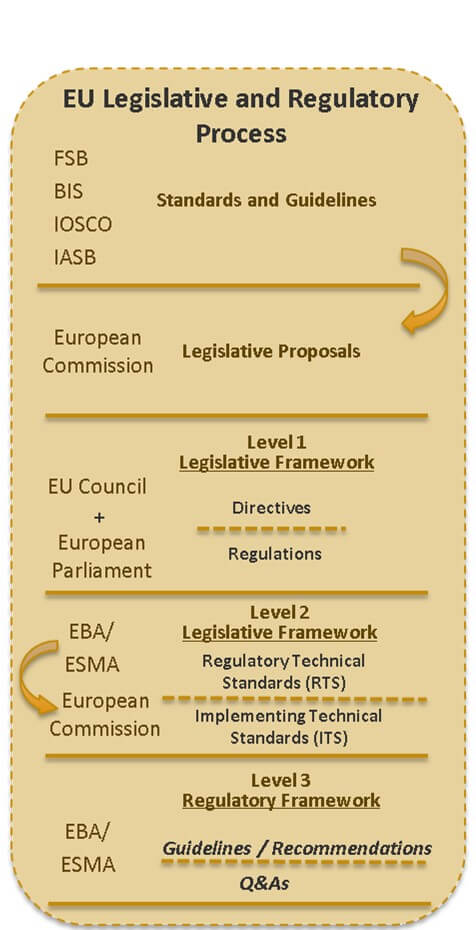Legislative and Regulatory Process in the European Union
The FSB, BIS, IOSCO and IASB issue rules (usually referred to as "standards") and make recommendations, which are adopted in the European legal system through Directives and Regulations.
These pieces of legislation (Directives and Regulations) originate from proposals submitted by the European Commission, which are then subject to negotiation and approval by the European Council and the European Parliament and constitute level 1 measures.
European Regulations apply directly within the internal legal system of the countries that make up the European Union, while Directives have to be transposed into the different legal systems and once transposed, become law in the EU Member States.
Directives can provide for either maximum (or full) harmonisation, in which case Member States may not introduce rules that are stricter than those set in the directive, or minimum harmonisation, where EU countries have the right to set higher standards than those set in the Directive.

The European legislative framework also comprises Level 2 measures, issued under mandates granted to the European Supervisory Authorities (EBA/ESMA/EIOPA) to regulate Level 1 decisions. These can take the form of Regulatory Technical Standards (RTS) or Implementing Technical Standards (ITS). RTS and ITS projects prepared by European supervisory authorities are then formally adopted by the European Commission.
European Supervisory Authorities (EBA/ESMA/EIOPA) may also, within their mandate, issue Guidelines, Recommendations and Q&A, which are called Level 3 measures. These measures are addressed to the competent national supervisory authorities or supervised entities and, unlike Level 1 and Level 2 measures, are not legally binding.

